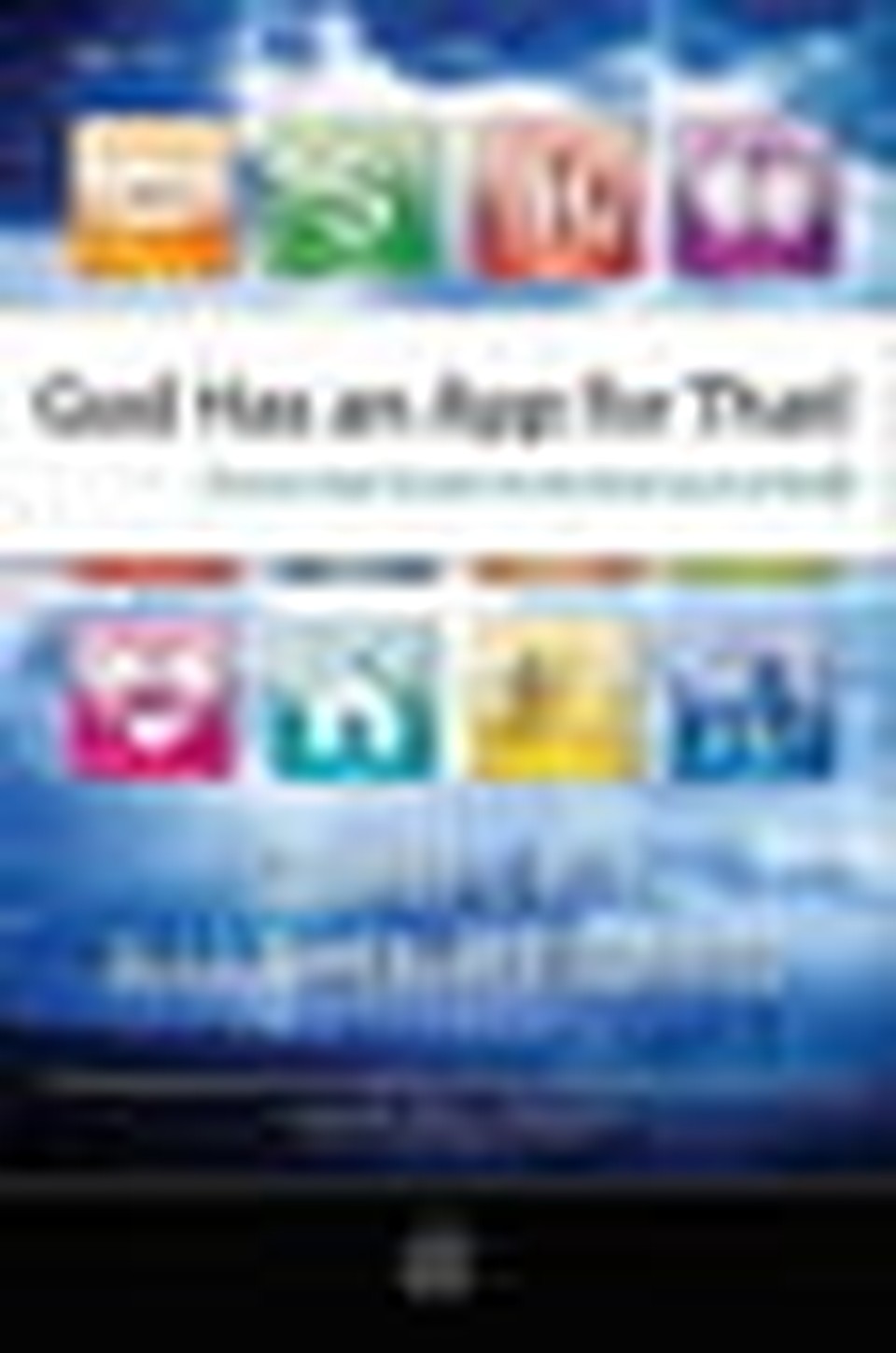Rutherford's App Doesn't Download Well

Author: Dudley Rutherford
Title: God Has an App for That
Publisher: Regal
The credibility gap. It’s the chasm that can appear between good doctrine and lousy filler. Unfortunately, it’s what ultimately cripples Dudley Rutherford’s otherwise engaging book on developing Christlikeness, God Has an App for That.
Obviously built on the current smartphone craze, in which users can download applications to their mobile phones to help make their lives “easier,” God Has an App for That covers eight common struggles in the Christian life:
- Turning stress into joy
- Overcoming temptation
- Eliminating favoritism in fellowship
- Refreshing a lagging faith walk
- Understanding the dangers of profanity
- Restoring a broken heart
- Being wise with the things with which God has blessed us
- Seeking healing for physical pain
Rutherford devotes a chapter to each struggle, and then completes his book with a reference guide to Scripture passages addressing a variety of similar issues, a schedule for reading through the Bible in one year, and copious end notes for further research.
It’s all a relevant package, geared mostly to new Christians or people who are being drawn to Christ. Rutherford’s theology won’t suit everybody—he’s a non-denominational megachurch pastor leaning more toward the charismatic side of the spectrum—but he digs up some often-overlooked Old Testament stories, mixes in passages from the New Testament book of James, and makes astute applications from the result.
Indeed, his chapter on eliminating favoritism in church—with a particular emphasis on racism—provides a solid challenge for churches of all colors and denominations.
If Rutherford’s flavor of theology was all that some readers might not wholly embrace, God Has an App for That might still be able to stand on its own. Sure, there’s the issue of whether an eight-point outline can fix spiritual problems—sometimes, Rutherford seems to be preaching a works-based salvation—but the basic Gospel of Christ remains a unifying theme throughout.
But then the credibility gap appears, as Rutherford embellishes his texts with numerous anecdotes that frequently miss their mark. He includes several personal illustrations ostensibly intended to convey his familiarity with suffering, but readers may have a hard time identifying with the problems experienced by a popular megachurch leader.
Rutherford also commits the classic evangelical mistake of misinterpreting the James 4:11 warning about judging others. Instead of adopting, as preachers like John MacArthur do, the more accurate interpretation of “defaming” for the word used as “judging,” Rutherford instead contradicts himself by inferring we shouldn’t judge the very actions we’re supposed to discern against. In the process, he misattributes the fable about “The Miller, the Boy, and the Donkey” to Aesop, and draws an inaccurate moral from it.
His most obvious mistakes, however, come when he claims some prominent historical figures as Christians. People like Archbishop Desmond Tutu, who although he is Anglican, and therefore “Christian,” is hardly somebody we’d consider “born-again,” since he believes the Bible is simply nice literature. Or Leo Tolstoy, Russia’s renowned author of War and Peace, whom Rutherford claims was a “devout Christian” despite his defiantly heretical beliefs on the personhood of Christ.
It’s these curious lapses in basic historicity and their doctrinal applications that, although infrequent, inevitably combine to undermine everything that’s good about God Has an App for That.
Rutherford’s credibility gap may not be perceptible to new Christians drawn to the practical applications he lays out in God Has an App for That. However, if anything, this book may better demonstrate how the less we try to use our own words to explain God’s, the more his can say to us.
Originally published April 04, 2012.







